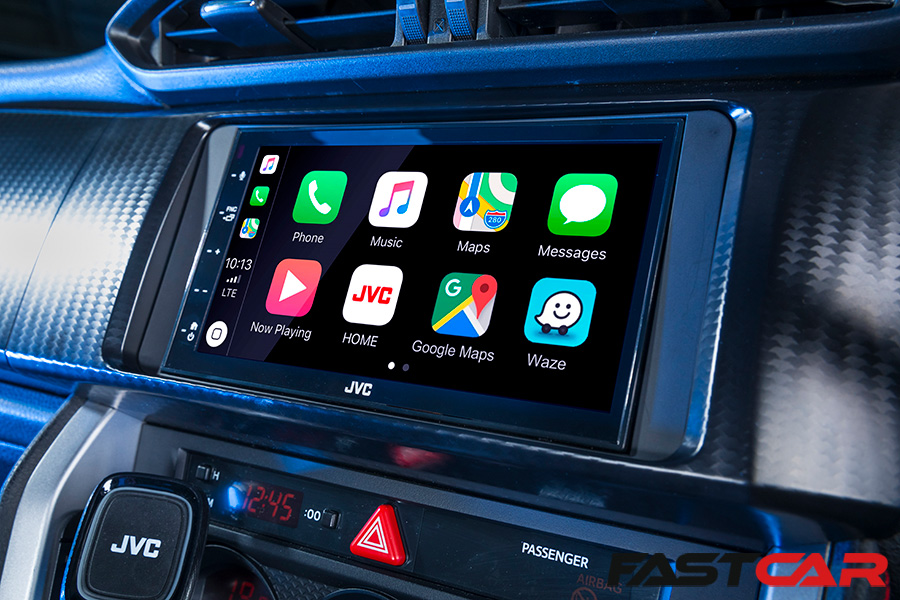We take a look at what Apple CarPlay and Android Auto connectivity is, which is better, and how to connect your smartphone and use crucial apps to aid your driving.
If you’re sat there wondering what all the buzz is around Apple CarPlay and Android Auto, then you’ve come to the right place. Below, we’ll break down what the two systems are, and why so many car stereo upgrades include them as features. We’ll also take a look at which is better, and how you can connect your smartphone to either tool.
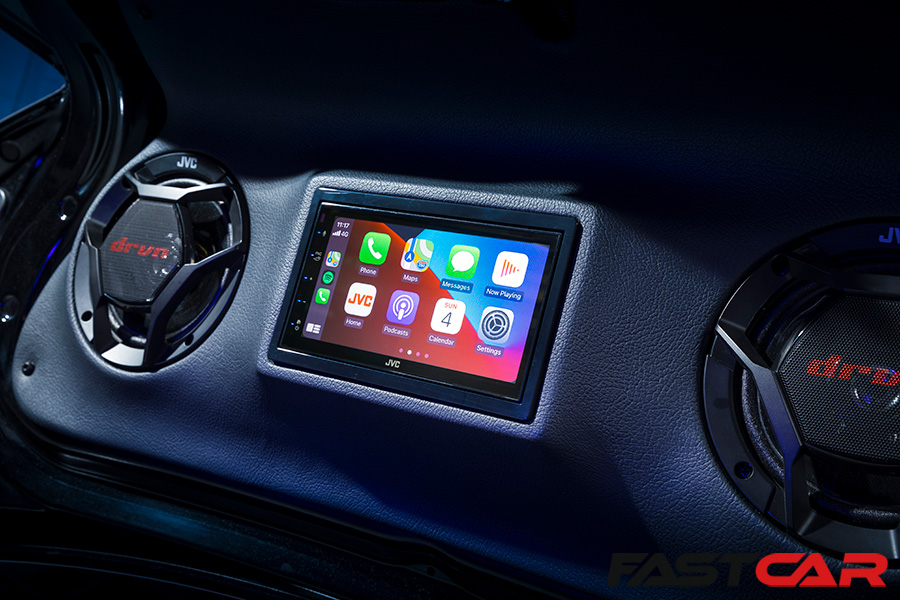
Apple CarPlay
Apple CarPlay allows drivers to use their iPhone in their car’s infotainment system. CarPlay integrates the iPhone’s functionality into the car’s dashboard display. This provides a safer and more convenient way to access features like music, maps, and phone calls while driving.
With CarPlay, drivers can easily connect their iPhone to their car’s infotainment system using a lightning cable or wireless connection. Once connected, the car’s display mirrors the iPhone’s interface. Drivers can use voice commands or the car’s touch screen/menu selector to access a variety of apps, including Apple Maps, Apple Music, and other third-party apps like Spotify and WhatsApp.
One of the key benefits of CarPlay is its integration with Siri. Drivers can use voice commands to send and receive messages, make phone calls, and access information without having to take their hands off the wheel. Siri can also help with navigation, providing turn-by-turn directions and real-time traffic updates.
CarPlay also provides a safer driving experience by minimizing distractions. It is designed to display only the most essential information, such as maps and audio controls, on the car’s dashboard display. This helps to keep drivers focused on the road and reduces the risk of accidents caused by distracted driving. Other features that have been incorporated into Apple CarPlay are tuning apps and other diagnostic tools. Be sure to check out our guide to the best smartphone car apps.
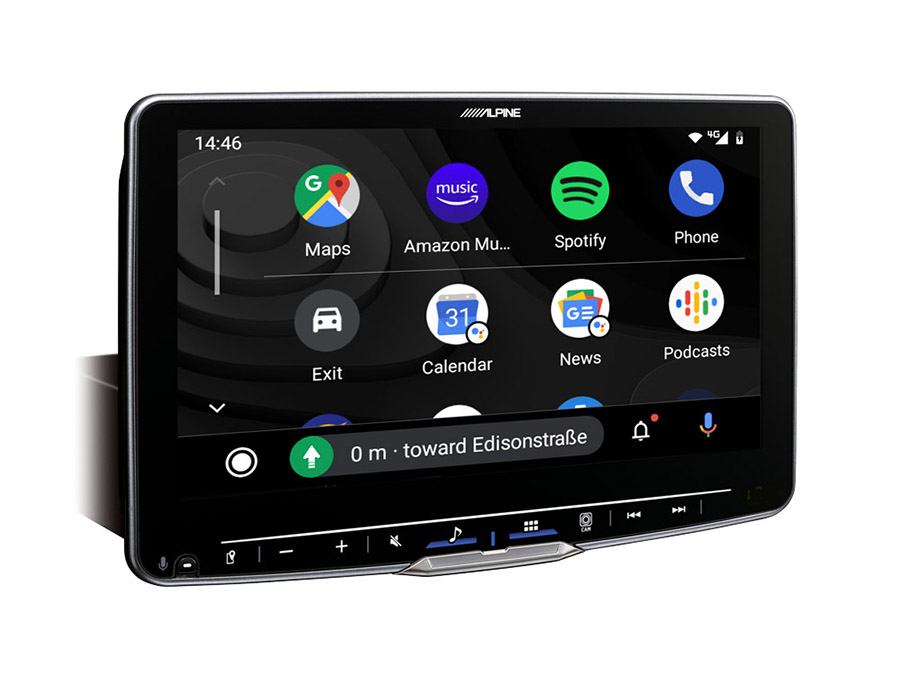
Android Auto
Android Auto is the Google equivalent of Apple CarPlay. It allows Android users to connect their smartphones to their car’s infotainment system to access various phone apps like Spotify and Maps in a safe way for drivers.
Once connected, the smartphone screen mirrors onto the car’s dashboard display. This allows drivers to easily and safely interact with their phone’s features using voice commands or the car’s touchscreen display.
Android Auto provides access to a range of apps, including Google Maps for navigation, Google Play Music for music streaming, and messaging apps like WhatsApp. It also supports a range of other third-party apps, such as Spotify, Pandora, and Waze. All of which have “Driving Modes” that disable some features that may distract a driver, such as typing, while the vehicle is moving.
One of the key benefits of Android Auto is Google Assistant. Drivers can use voice commands to access a wide range of features, such as sending and receiving messages, making phone calls, and playing music. Google Assistant also provides real-time traffic updates and can help with navigation, making it easier to get to your destination.
Android Auto is designed to minimize distractions while driving, displaying only the most important information, such as maps and audio controls, on the car’s dashboard display. This helps to keep drivers focused on the road and reduces the risk of accidents caused by distracted driving.
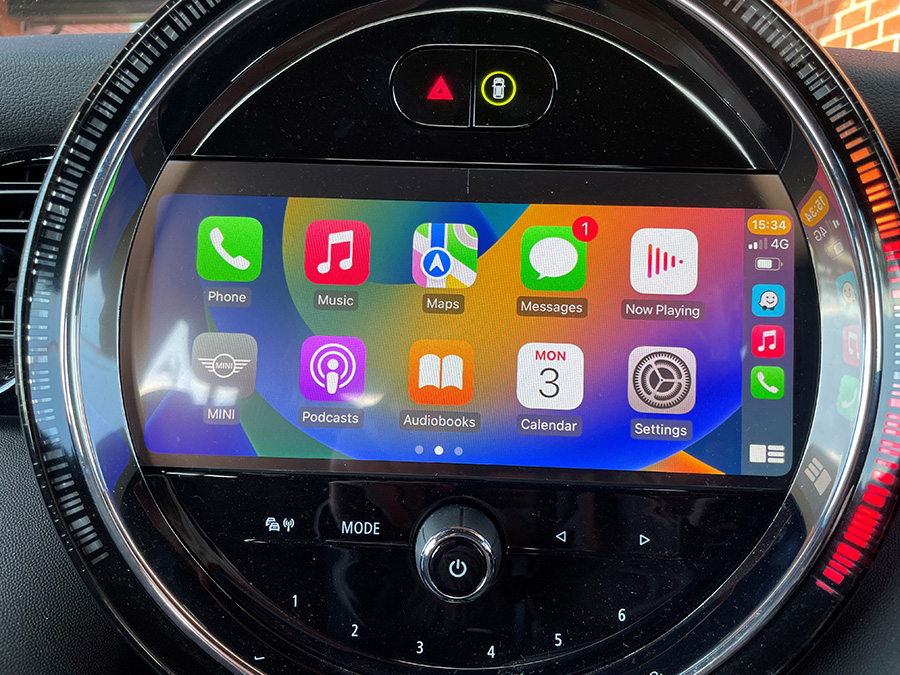
Apple CarPlay vs Android Auto: Which is better?
In terms of which system is better, it ultimately depends on personal preference and which smartphone platform you are already using.
Both Apple CarPlay and Android Auto offer similar features, such as integrating your smartphone with your car’s infotainment system and allowing you to access apps like music and navigation while driving. Both systems also offer voice control options to minimize distractions and increase safety while on the road.
Apple CarPlay is aimed at iPhone users and other Apple device owners. The system is designed to specifically work with iOS devices and the Apple ecosystem. A benefit for Apple CarPlay users is that a wider range of apps are supported compared with Android Auto.
As you might have guessed, Android Auto is aimed at Android users, and therefore is designed to work with the Android operating system. As a result, it offers a wider range of connectivity to Google apps.
Ultimately, both Apple CarPlay and Android Auto are great options for integrating your smartphone with your car’s infotainment system. The choice between them, therefore, comes down to personal preference and which ecosystem you are already using.
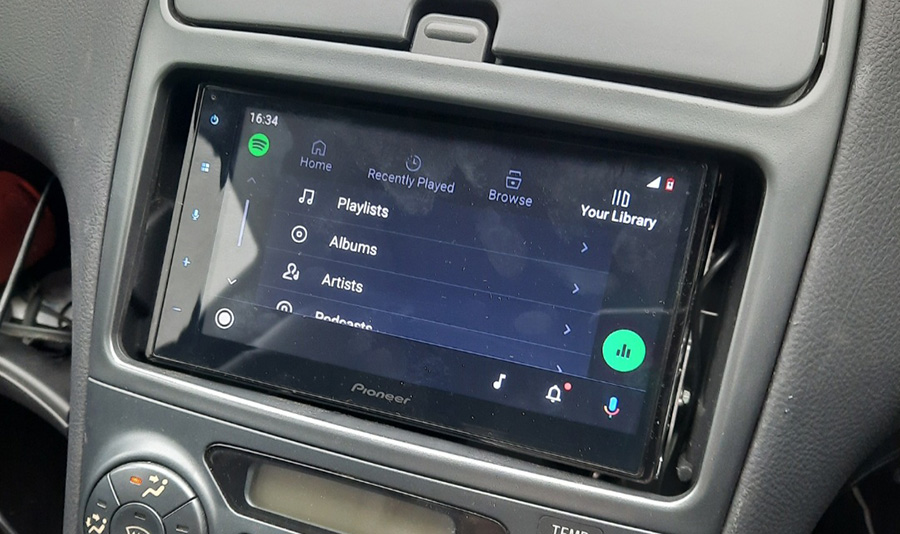
How to connect Apple CarPlay and Android Auto
Provided your infotainment system or aftermarket car stereo has Apple CarPlay and/or Android Auto functionality, connecting your phone couldn’t be simpler. There are two ways you can connect; either via a USB cable, or wirelessly. Wireless Apple CarPlay / Android Auto car stereos tend to be more expensive, and therefore, connectivity via USB will only be possible on certain systems. Again, OEM systems may or may not offer wireless connectivity, check your car’s information book.
To connect via USB, simply plug your phone into the car’s infotainment system via its charging cable. Both your phone and infotainment screen will then begin to pair, bringing up prompts for permission to access various features. Once connected, you’ll be able to use your phone’s features via the infotainment screen.
To connect wirelessly, go to your car’s media settings and connect a device. Select Connect Device (wording changes from model to model) and your infotainment system will begin a search for Bluetooth devises. Find and select your smartphone from the list displayed. This will then bring up a number of prompts both on the infotainment system as well as your smartphone. Once accepted, your car should prompt you numerous times to connect Apple CarPlay / Android Auto (this differs from system to system, refer to the manual). Once connected, you’ll be able to use all of the Apple CarPlay / Android Auto functions on your infotainment system.

